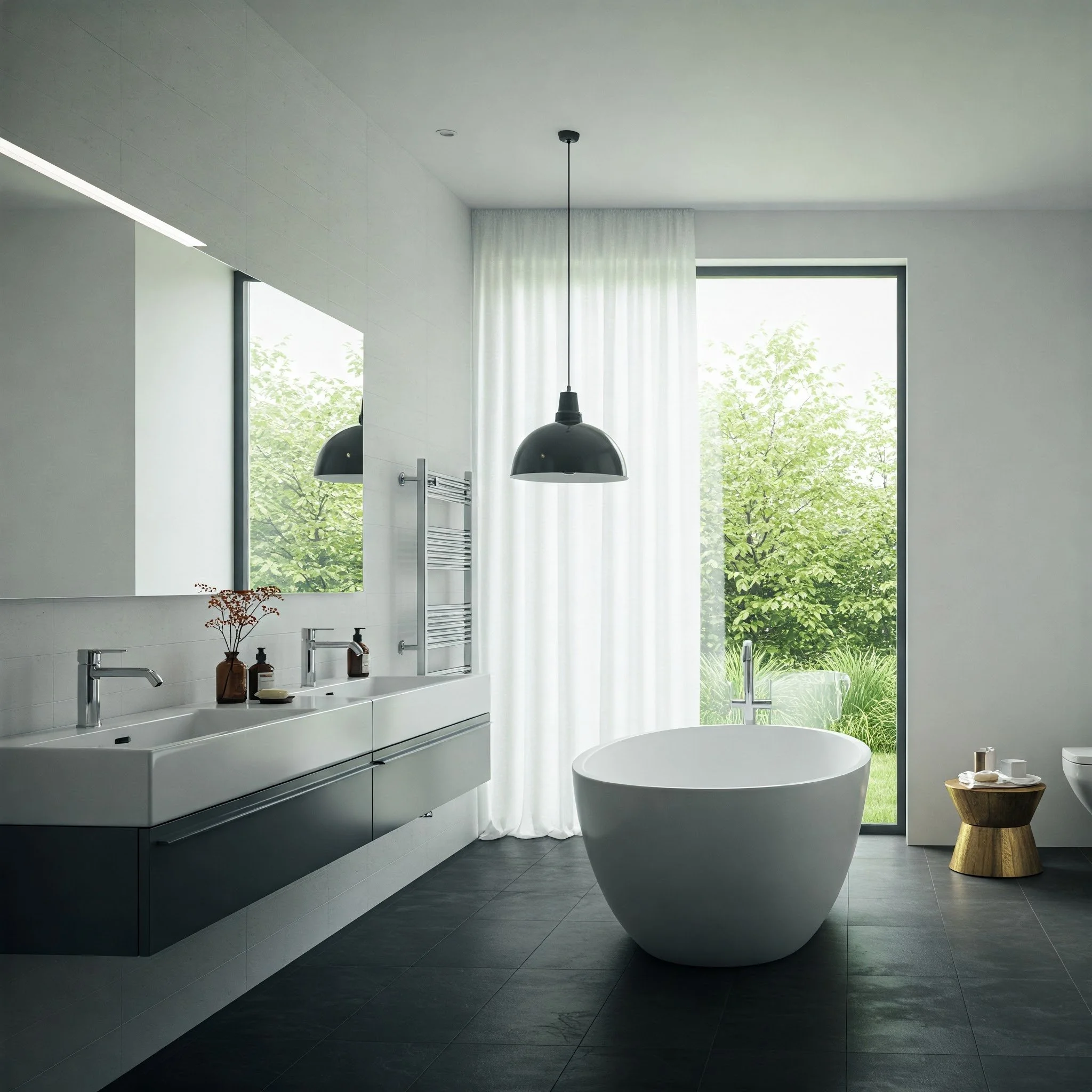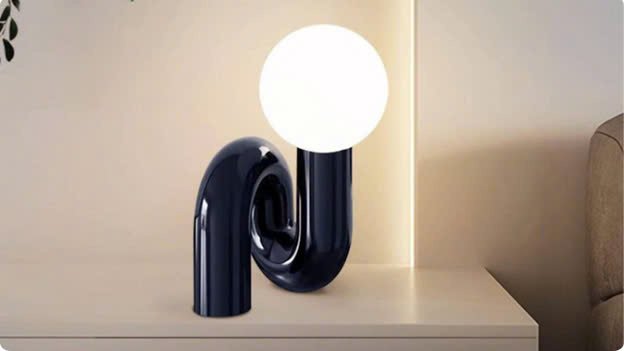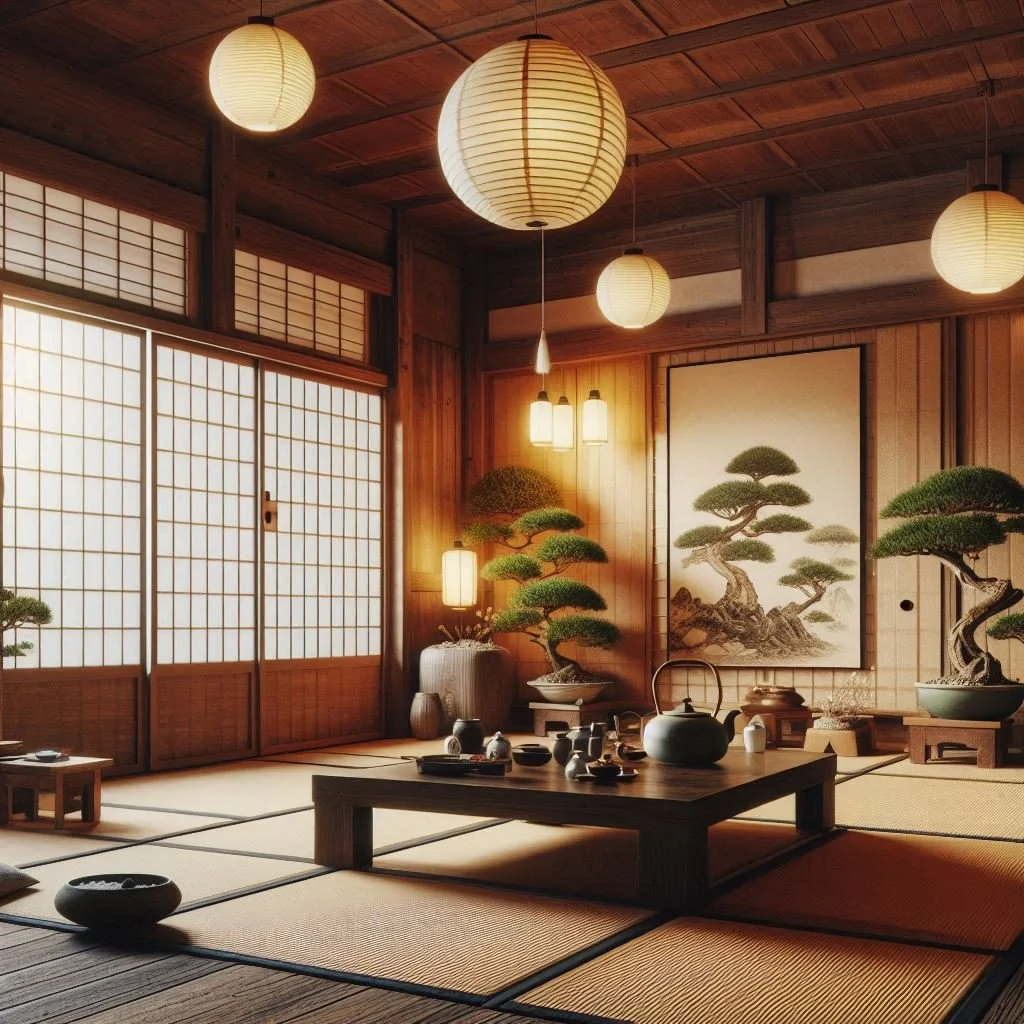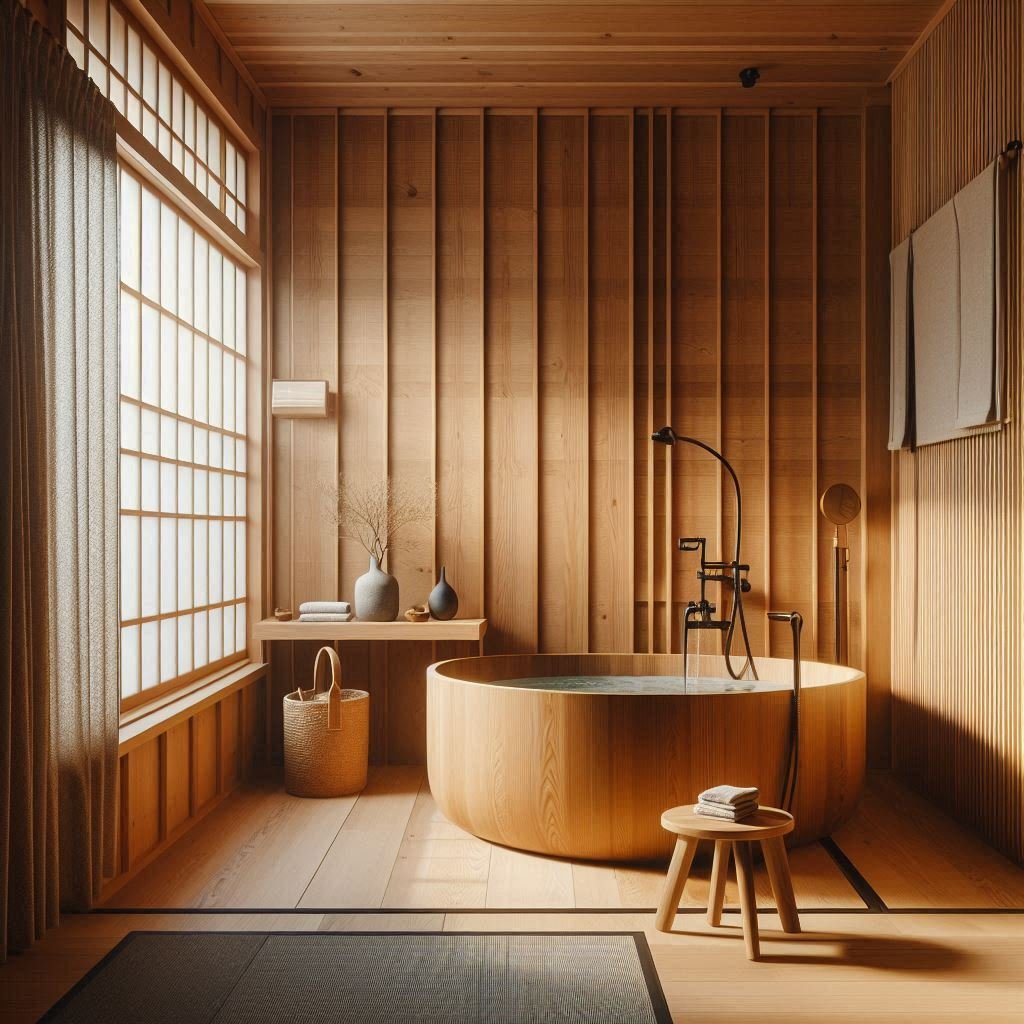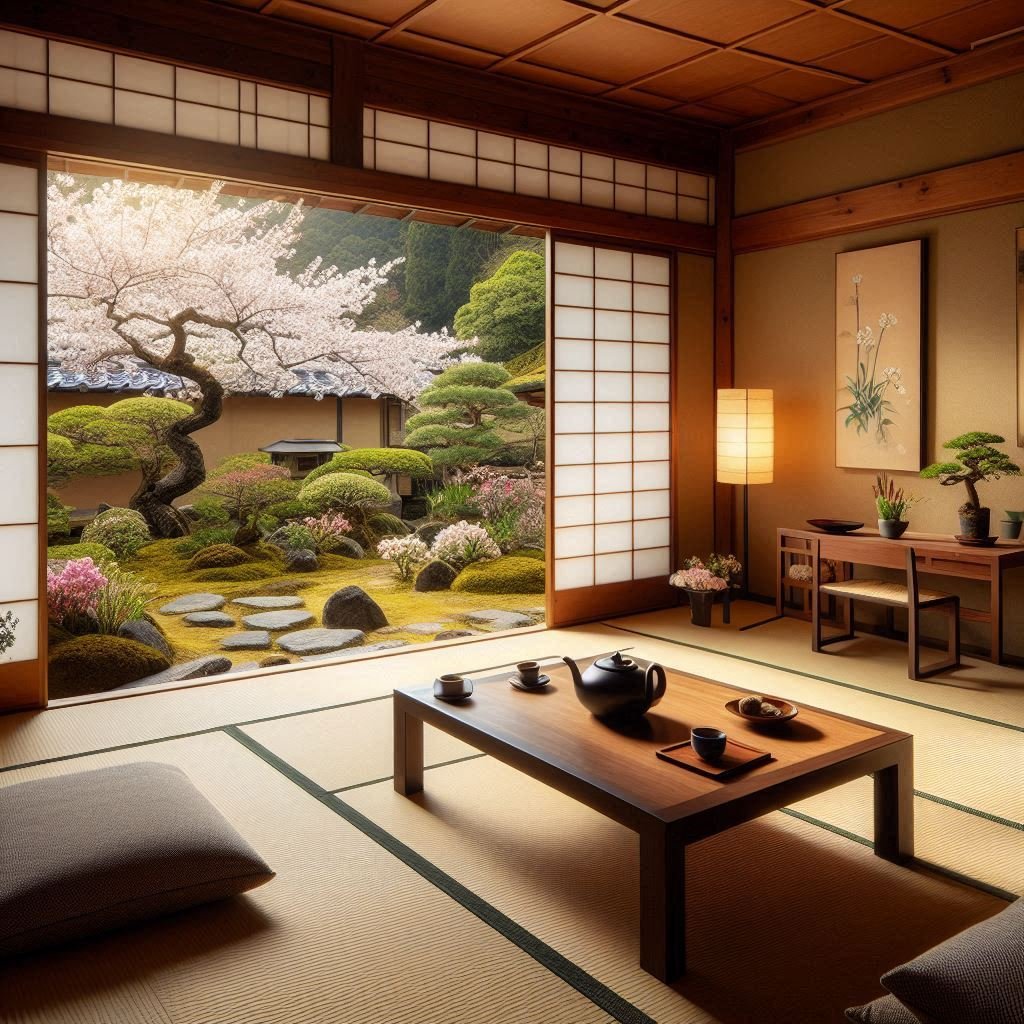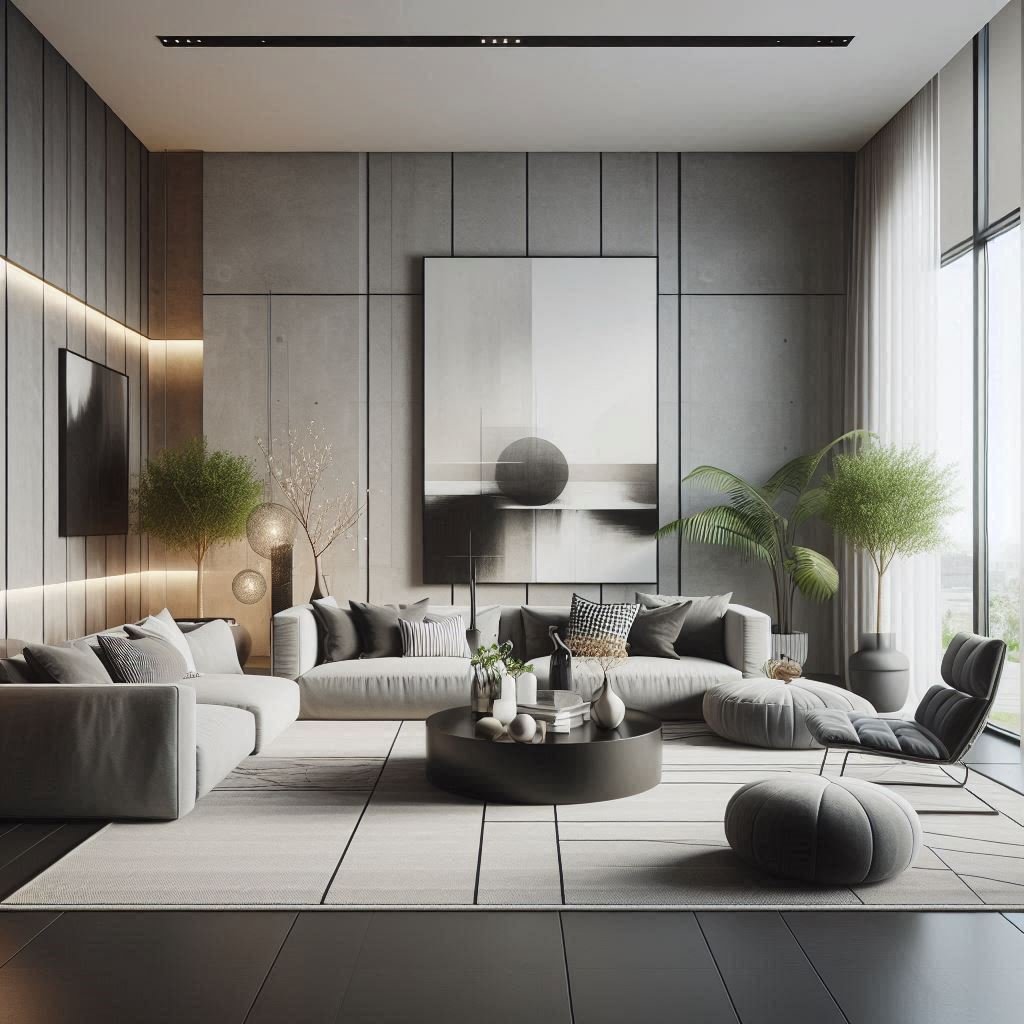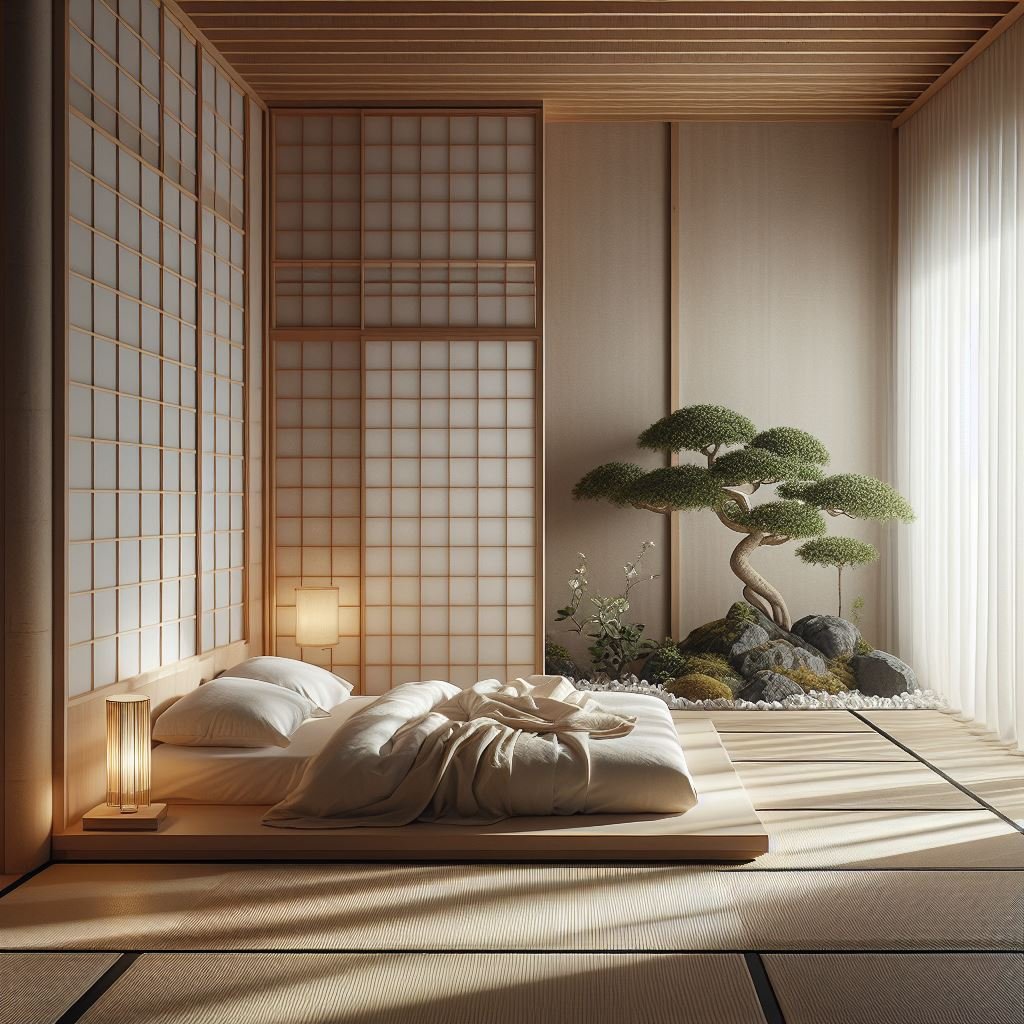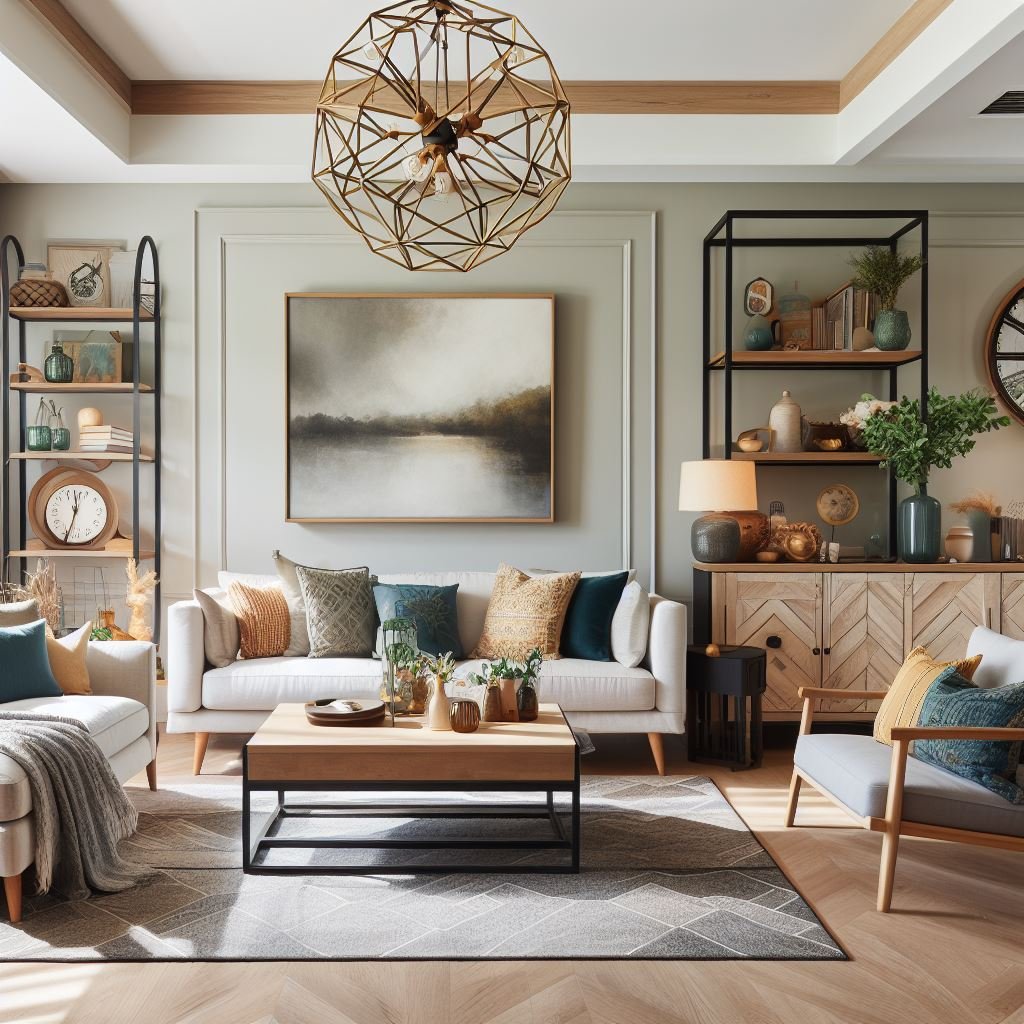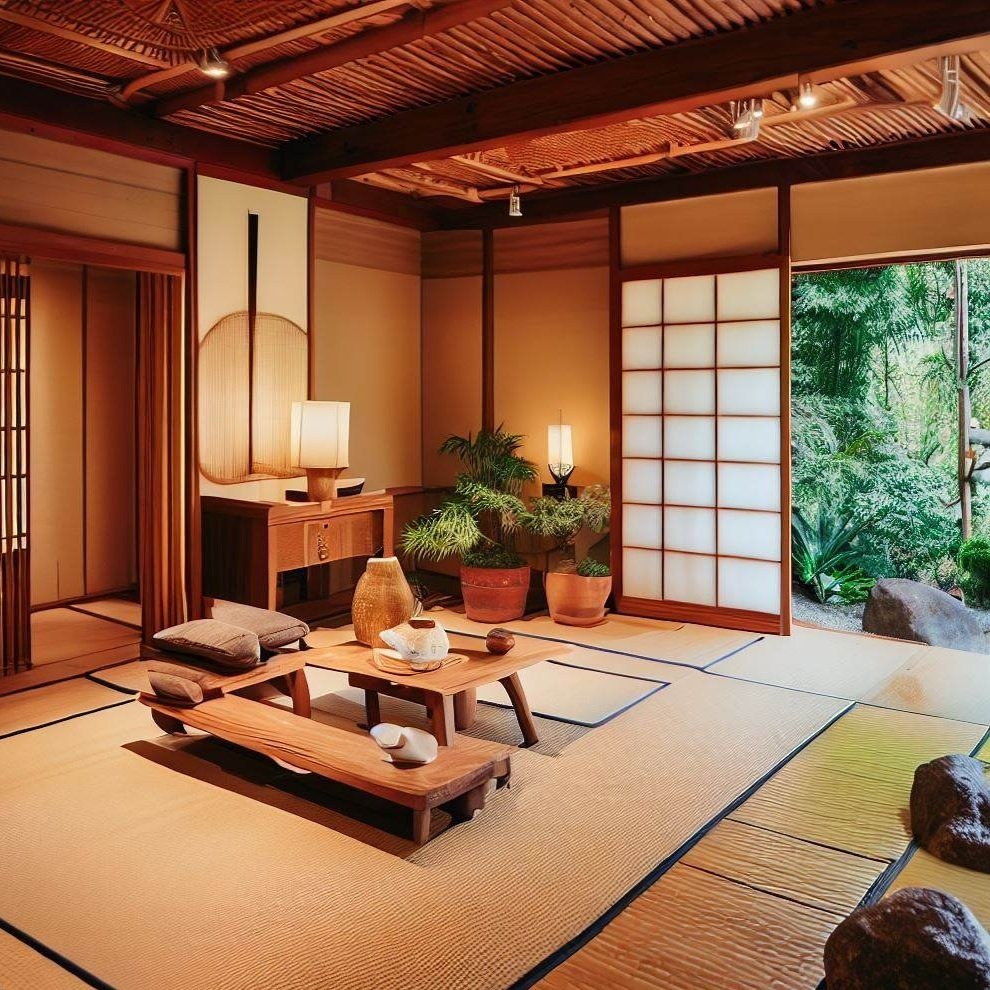15 Contemporary Japanese Interior Design Ideas to Inspire
Explore 15 contemporary Japanese interior design ideas to inspire your home decor. Discover how to blend traditional elements with modern elegance for a serene and stylish space.
Japanese interior design is renowned for its simplicity, elegance, and connection to nature. It seamlessly blends traditional elements with contemporary touches, creating spaces that are both tranquil and stylish. Whether you're looking to completely redesign your home or simply add a few Japanese-inspired touches, these ideas will help you create a serene and harmonious environment. Ready to infuse your space with the timeless beauty of Japanese design? Let’s explore 15 contemporary Japanese interior design ideas that will inspire and elevate your home decor.
1. Minimalist Aesthetic
Japanese design is synonymous with minimalism, embracing simplicity and functionality. To achieve this look, declutter your space and focus on selecting furniture that is both practical and aesthetically pleasing. Opt for pieces with clean lines and avoid excessive ornamentation to maintain a sense of calm and order. A minimalist approach not only highlights the beauty of each element but also creates a serene environment that encourages relaxation and appreciation of simplicity. By integrating these principles, you can cultivate a space that embodies the tranquility and elegance characteristic of Japanese design.
2. Natural Materials
Incorporate natural materials such as wood, bamboo, and stone to infuse your home with a touch of nature and enhance its warmth and texture. These elements create a harmonious and balanced environment that fosters a sense of organic elegance. Consider installing wooden flooring to add natural beauty and warmth underfoot, using bamboo furniture to introduce a sustainable and stylish touch, and opting for stone countertops to bring a timeless, earthy quality to your kitchen or bathroom. By integrating these materials into your decor, you create a space that feels connected to nature, adding both visual interest and a calming, grounded atmosphere to your home.
3. Tatami Mats
Tatami mats are traditional Japanese flooring crafted from rice straw, offering a soft and natural surface ideal for meditation and relaxation. Their unique texture and warmth contribute to a serene atmosphere, making them a perfect addition to your living room, bedroom, or meditation space. Incorporating tatami mats into your home not only adds an authentic Japanese touch but also enhances the comfort and tranquility of your environment. Their versatility allows them to blend seamlessly with various decor styles, creating a peaceful retreat within your space. By choosing tatami mats, you embrace a time-honored tradition that promotes mindfulness and relaxation, enriching your home with cultural significance and natural beauty.
4. Sliding Shoji Doors
Shoji doors are elegant sliding panels constructed from translucent paper set within wooden frames. These doors allow natural light to gently filter through, creating a bright and airy atmosphere while still maintaining privacy. Ideal for separating rooms or defining flexible spaces, shoji doors offer a versatile solution that can be easily reconfigured to suit your needs. Their minimalist design and soft illumination enhance the overall tranquility of a space, reflecting traditional Japanese aesthetics. By incorporating shoji doors into your home, you not only gain a practical feature but also infuse your interior with a touch of timeless elegance and functional beauty.
5. Zen Gardens
A Zen garden, or karesansui, is a serene dry landscape garden that uses rocks, sand, and minimal vegetation to cultivate tranquility and meditation. Design a small Zen garden in your backyard or on a balcony to create a peaceful retreat from the bustle of daily life. Use a rake to create soothing patterns in the sand, symbolizing ripples in water, and strategically arrange rocks to represent mountains and other natural elements. The simplicity and intentionality of a Zen garden foster a calming environment, encouraging mindfulness and relaxation. This minimalist approach to landscaping not only adds an element of elegance to your space but also provides a dedicated area for reflection and inner peace.
6. Low Furniture
Low furniture, including floor cushions, low tables, and futons, fosters a sense of groundedness and connection to the earth, embodying a hallmark of Japanese design. This style promotes a cozy, intimate atmosphere that encourages relaxation and social interaction. By incorporating low seating into your living room or dining area, you create a welcoming environment that invites comfort and closeness. The simplicity and functionality of low furniture not only enhance the aesthetic appeal of your space but also encourage a more relaxed and informal way of living. Embracing this approach helps to establish a harmonious and serene setting, allowing you and your guests to enjoy a deeper sense of tranquility and togetherness.
7. Clean Lines and Open Spaces
Japanese design emphasizes clean lines and open spaces to cultivate simplicity and a seamless flow within a home. To achieve this aesthetic, avoid bulky furniture and unnecessary walls that can disrupt the sense of openness. Instead, embrace open floor plans and streamlined furniture that enhance the feeling of spaciousness and freedom. By focusing on minimalist, well-proportioned pieces and maintaining an uncluttered environment, you create a serene and harmonious space that feels both expansive and inviting. This approach not only highlights the beauty of each element but also promotes a sense of tranquility and balance, allowing the natural flow of the room to become a defining feature of your interior design.
8. Indoor Plants and Bonsai
Plants play a crucial role in Japanese design, symbolizing life and growth while adding a touch of nature to your home. To embrace this aspect of Japanese aesthetics, incorporate indoor plants and bonsai trees that enhance your space with their serene beauty. Opt for plants that thrive in low light and require minimal maintenance, such as ferns, moss, and bamboo, to ensure they complement your lifestyle. These plants not only improve air quality but also contribute to a tranquil and harmonious environment. By integrating greenery into your decor, you create a calming atmosphere that reflects the essence of Japanese design, fostering a connection to nature and enhancing the overall serenity of your living space.
9. Neutral Color Palette
A neutral color palette, encompassing shades of white, beige, gray, and brown, is essential for creating a serene and harmonious atmosphere. These colors provide a calm and unobtrusive backdrop that highlights natural materials and textures, contributing to a peaceful and balanced environment. By opting for neutral tones, you allow the intrinsic beauty of elements like wood, stone, and fabric to take center stage. To introduce subtle bursts of personality and vibrancy, incorporate accessories such as cushions, rugs, and artwork in carefully chosen hues. This approach ensures that while the primary color scheme remains understated, the added accents provide depth and interest without disrupting the overall sense of tranquility and cohesion.
10. Japanese Art and Decor
Incorporate Japanese art and decor to infuse your home with cultural richness and elegance. Hang traditional calligraphy or prints to showcase the beauty of Japanese artistry, and consider including modern Japanese artwork to add a contemporary touch. Complement these pieces with decor items such as ceramic vases, tea sets, and lanterns, which enhance the aesthetic and create a cohesive look. Each item not only contributes to the visual appeal but also reflects the timeless traditions and craftsmanship of Japanese culture. By thoughtfully integrating these elements, you create a space that celebrates the beauty and depth of Japanese design, enriching your home with a harmonious blend of tradition and style.
11. Sunken Living Rooms
A sunken living room, or "conversation pit," is a distinctive and stylish feature that fosters a cozy and intimate atmosphere. Inspired by traditional Japanese architecture, this design element creates a unique focal point in your living space, encouraging social interaction and relaxation. By incorporating a sunken seating area, you add both depth and visual interest to your living room, making it a perfect spot for gatherings and casual conversations. The lower seating arrangement invites a relaxed and informal vibe, while also enhancing the overall sense of openness and flow within the room. This innovative feature not only reflects Japanese design principles but also transforms your living area into a welcoming and engaging space.
12. Bamboo and Wooden Elements
Bamboo and wood are central to Japanese design, celebrated for their beauty and sustainability. Bamboo, with its natural elegance, is ideal for flooring, furniture, and decor, infusing your space with a warm, organic touch. Its fast growth and renewable nature make it a highly eco-friendly choice. Complement bamboo with wooden beams, wall panels, and furniture pieces to further enhance the natural aesthetic of your home. These materials not only contribute to a serene and harmonious atmosphere but also emphasize a connection to nature. Incorporating bamboo and wood into your design creates a balanced, inviting environment that reflects the timeless appeal of Japanese craftsmanship and environmental mindfulness.
13. Japanese Bathing Rituals
Incorporate Japanese bathing rituals into your bathroom design to craft a serene, spa-like retreat. A deep soaking tub, or ofuro, offers a relaxing and meditative experience, allowing you to unwind fully. Surround this with natural materials like wood and stone to create a warm, soothing environment. Bamboo mats provide a touch of authenticity and comfort, while soft, ambient lighting adds to the tranquil ambiance. By integrating these elements, you not only enhance the aesthetic appeal of your bathroom but also promote a sense of peace and relaxation, reflecting the essence of Japanese bathing culture. This approach transforms your bathroom into a sanctuary where you can escape daily stresses and enjoy a truly rejuvenating experience.
14. Modern Lighting Solutions
Lighting plays a pivotal role in Japanese design, shaping ambiance and accentuating architectural features. To achieve a balanced and inviting glow, blend natural light with carefully selected lighting fixtures. Paper lanterns and traditional Japanese lanterns add a soft, diffused light that enhances the serene atmosphere, while pendant lights and modern fixtures provide both functionality and style. Recessed lighting can subtly highlight key elements of your space, such as architectural details or artwork. By integrating these various sources of light, you create a harmonious environment that not only illuminates but also enhances the tranquil and balanced aesthetic characteristic of Japanese design. This approach ensures your space remains warm, inviting, and visually engaging.
15. Integrated Technology
Blend traditional design with modern convenience by seamlessly integrating smart home technology. Automated lighting, climate control, and security systems enhance comfort and efficiency while allowing for a contemporary lifestyle. Choose smart devices that are discreetly integrated into your design to maintain the minimalist and natural aesthetic characteristic of Japanese interiors. For instance, opt for flush-mounted controls and hidden sensors to avoid disrupting the clean lines and serene ambiance of your space. By thoughtfully incorporating these technologies, you can enjoy the benefits of modern advancements without compromising the timeless and tranquil beauty of your traditional design elements, achieving a harmonious balance between past and present.
Conclusion
Incorporating contemporary Japanese design into your home can create a serene and elegant environment that promotes relaxation and harmony. From minimalist aesthetics and natural materials to Zen gardens and modern lighting solutions, these ideas will help you transform your space into a tranquil sanctuary. Start with a few key elements and build from there, creating a home that reflects the timeless beauty and simplicity of Japanese design.
Frequently Asked Questions
What are the key elements of Japanese interior design?
Key elements include minimalism, natural materials, neutral color palettes, and a strong connection to nature.
How can I incorporate Japanese design in a small apartment?
Focus on decluttering, using natural materials, and incorporating multifunctional furniture. Use sliding shoji doors and open shelving to create a sense of space.
What types of plants are best for Japanese interior design?
Bonsai trees, bamboo, ferns, and moss are all excellent choices. These plants are low-maintenance and add a touch of nature indoors.
Can Japanese design be combined with other styles?
Yes, Japanese design can be seamlessly combined with other styles, such as Scandinavian or modern minimalism, to create a unique and harmonious look.
What are some cost-effective ways to achieve a Japanese-inspired look?
Use affordable materials like bamboo and natural fibers, incorporate DIY elements like a small Zen garden, and focus on decluttering and organizing your space to create a minimalist aesthetic.
















